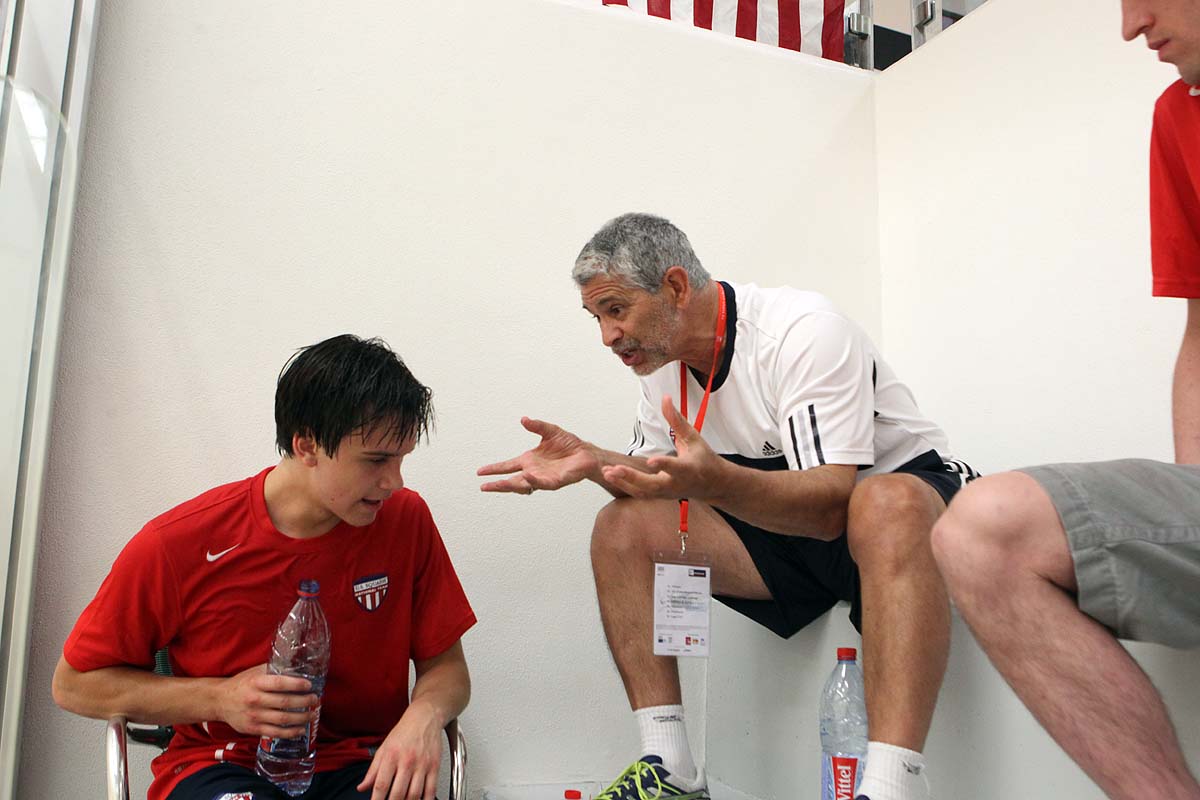By Peter Nicol
I had a fascinating couple of days recently when I went to Boston to film footage for Squashskills.com with Mike Way (Harvard Coach) and Thierry Lincou (MIT Coach and former World No.1). What struck me was their enthusiasm and interest in everything to do with the game. Mike has vast experience with both the professional and college game, and Thierry is transitioning into being a coach from playing on the tour—something I’m in the process of doing as well.
I was at Harvard’s Murr Center with Mike first and, apart from his obvious love of coaching and imparting information to everyone who is interested, his ability to explain his philosophy by using players and coaches throughout his long squash career as examples was what really stood out. Mike is a sponge for any information on the game—he takes on as much reasonable information from others and adds this to his already massive databank of information. From here he determines his opinions, honed from all his experiences in the game, logically and sensibly woven into a way of teaching that is remarkable in its wide breadth of influences and willingness to embrace them.

Mike can also mimic the movement patterns and techniques of most of the top players from the last thirty years (seriously!). I thought I had only two ways of moving into the back left corner but, after examples from Mike of three additional ways, I realized that, as with most players, I have several more—and I need to learn what they are and how to teach them.
Thierry was up next, and though his views are based on his time playing on tour, the questioning and thirst for learning more were very apparent. The videos we shot on movement and solo practice were similar but markedly different to anything I’d ever seen. But upon finishing, Thierry immediately asked my opinion on what he had shown me and what I would have done. Although early in his coaching career, Thierry showed the same passion, interest and willingness as Mike to reach out and progress as a coach.
For his movement drill, Thierry’s “magic square” sequence and execution was hugely impressive. He was meticulous with all the movements and focused 100% on working as hard and to the best of his abilities—another great example for any players wanting to improve.
Meeting and discussing the game with Mike and Thierry was a great lesson for me. Sticking to one technique or movement pattern, without ever questioning them, is sheer folly and will mean slower improvement or even regression rather than progression as a player or coach.
So next time you see someone play in a different way than you or move in a different pattern, ask why. You never know, it may spark a thought, create change and benefit your game!





